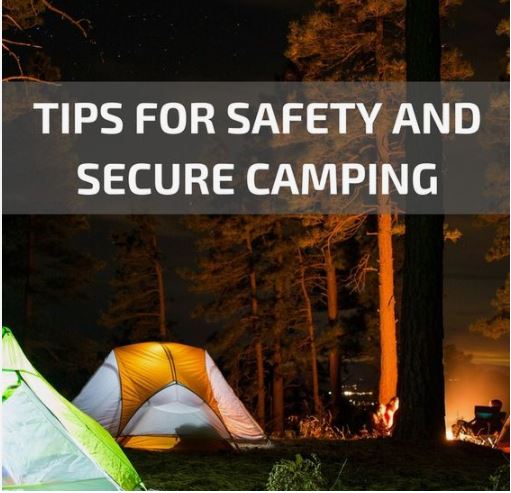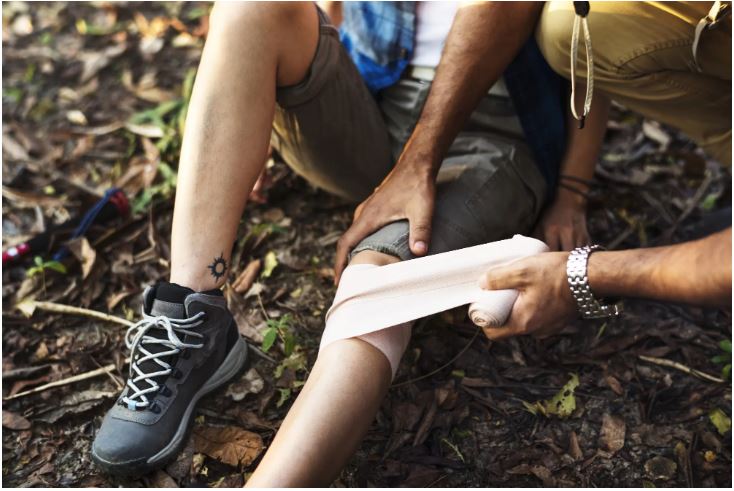Hiking and camping provide exercise and interest for people of any age. Hiking & camping safety for beginners is important. Just getting out and walking around maybe a wonderful thanks to seeing nature.
Since unexpected things happen, however, the simplest thanks to helping guarantee an honest time for all is to plan ahead carefully and follow commonsense safety precautions.
Make sure you’ve got the talents you would like for your camping or hiking adventure. you’ll get to skills to read a compass, erect a short-lived shelter, or give care. Practice your skills beforehand.
Common Hiking Injuries
When hiking, there are many things that will fail. a number of the foremost common physical hiking injuries include:
- Fatigue
- Cramping
- Sunburn
- Blisters
- Twisted ankle
- Bug bites
- Minor scrapes to prevent these hiking injuries, follow the below tips for staying safe and healthy on the trail.
Pack First Aid and Emergency Kits
Your emergency kit should also include a minimum of the following:
A whistle, torch, compass, a little utility tool or knife, razor blades, tweezers, a hand glass, water sterilizing tablets, and a mirror. The mirror is often helpful for signaling for help.
Keep Mosquitos and Ticks At Bay
The Centers for Disease Control (CDC) encourages hikers to take care of getting mosquito bites or collecting ticks, as they will cause certain diseases. an insecticide that contains DEET is that the best thanks to preventing bug bites and protect yourself from the disease. After ever hike or camping trip, you ought to check for ticks everywhere your body—including your scalp. Wearing long sleeves and pants can help prevent bug bites but shouldn’t be worn in extreme heat.
Make Camp Before Dark
Always make certain to line up your campsite before nightfall. Doing it during the night is often challenging, albeit you’ve got headlamps and lanterns available. Not having the ability to ascertain clearly can cause injury or accidents to occur.
Check The Weather Forecast
Leading up to your hike, and again a couple of hours before, check the weather. this may offer you valuable information on the way to dress and what to pack. If the weather is forecast to be awful, it’ll offer you the prospect to vary plans rather than getting surprised on the trail.
What to Wear Hiking
In addition to the Ten Essentials and basic day hiking gear, you would like to organize for the weather with the proper hiking layers. Knowing the way to dress appropriately is an important hiking 101 skill. the initiative, check the forecast and remember that the weather within the mountains can change very quickly. Always steel oneself against the worst.
Good hiking layers are moisture-wicking, which suggests they dry quickly and move sweat faraway from your body and are typically made from polyester, nylon, or wool. Avoid cotton and other heavy fabrics, like jeans, that are heavy and slow drying. Most of what you pack depends on the season, temperature, and forecast. Here are a number of the Bearfoot Theory blog posts to assist you to sweep abreast of what to wear hiking.
Tell Someone Where You Will be
It’s important that somebody not on the hike knows the itinerary and what time to stress and involve help. Note I didn’t say, “when you expect to be done.” The “worry time” could also be several hours later than your planned finish to permit slow hiking, amazing views, or perhaps a sore ankle causing a delay. How To Reset Ink-pad Using Epson Adjustment Program.
Another option is to hold an emergency device like the SPOT tracker, which allows you to summon emergency assistance by satellite. One caveat, devices just like the SPOT aren’t an excuse to shirk responsibility for your own personal safety – they’re a backup.
Most importantly, as a final check-in this list of essential hiking & camping safety, don’t push yourself too hard.
Don’t attempt to impress others and don’t set your expectations too high. Start with low to medium difficulty shorter trails and plan your trips in order that you’ve got ideal weather.
Related Article:


